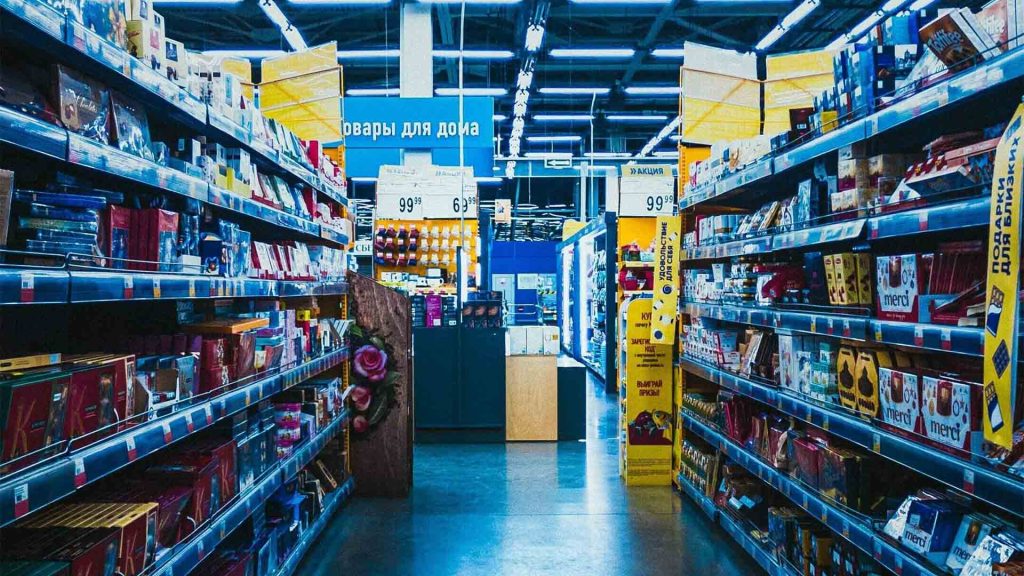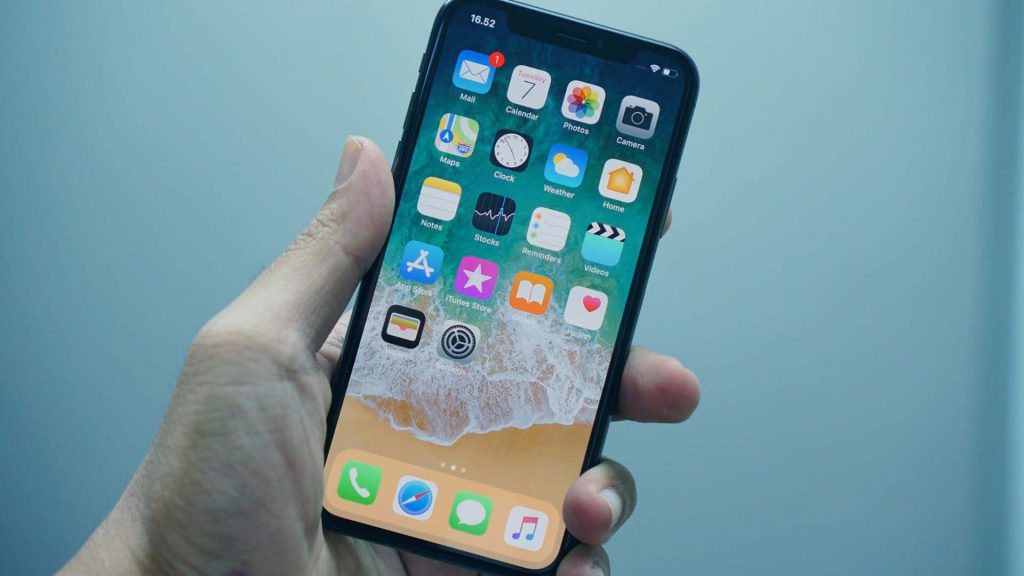Brand managers typically spend a disproportionate amount of time with their creative agencies in developing TV advertising. As though creating brand preference and purchase intent was the whole ballgame. It’s not. It’s just the start. The brand story we can communicate with TV advertising allows us to link functional and emotional benefits to a compelling brand experience that the customer can understand and believe. But as this chart for global branding agency Interbrand shows, unless we close the loop and close the sale at the point of purchase (starting with packaging), we’re just telling stories instead of selling products.
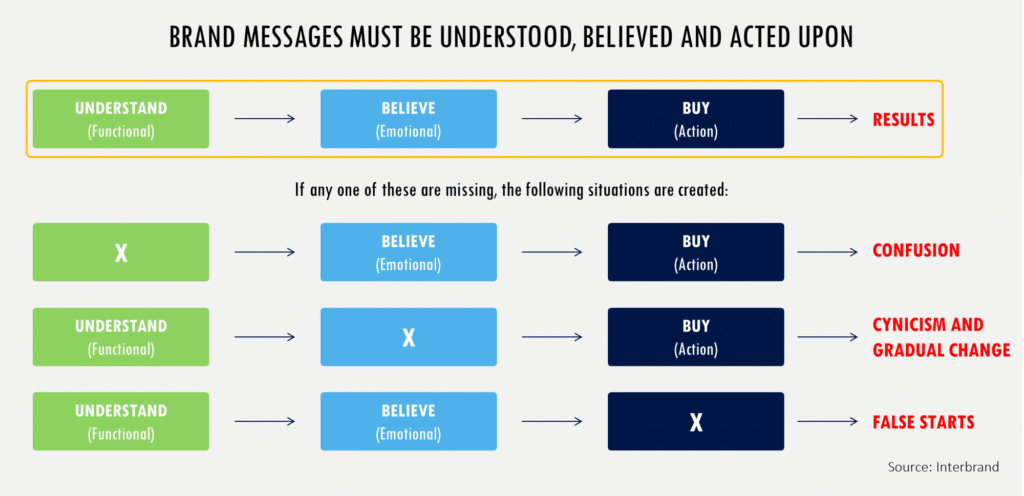
In-store communication
In-store communication is important not just because it is at that critical moment of truth, as former P&G CEO Lafley reminded his marketing team to focus on brand communications when it matters most, but because the packaging and in-store merchandising is harder because of time, space and other constraints in an in-store environment. That’s where you need to do your best thinking and your best marketing. You must create purchase intent at the point of sale in-store as though the customer has never seen your advertising. And with all the advertising filters and clutter, they might not have, regardless of all that media spending you’re doing.
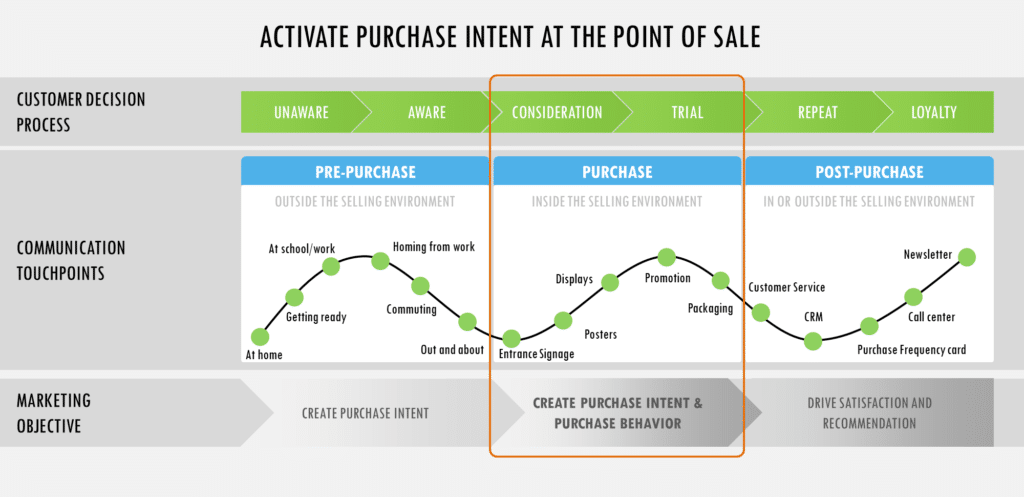
Two powerful brands, Starbucks and Arizona iced tea, hardly use any advertising at all. But the in-store experience at Starbucks makes me want to stay there all day drinking coffee and the Arizona packaging seems ready to jump out of the convenience store cooler.

The problem is that many marketers look at in-store communication as an entirely new communication process. It isn’t. If you intend to get a good return on investment from the marketing money you spend outside the selling environment, you must link it with the brand communications inside the selling environment. Dance with the girl that you came with, as they say in the countryside. It’s good advice for marketers, too. If what you are communicating outside the store is effective, why wouldn’t you reinforce that success inside the selling environment? Why wouldn’t you make it easier to close the sale?
Stay the course
Your brand experience is still the strategy driver just as it was outside the selling environment. The same combination of functional and emotional benefits that earned customer brand preference is the same brand experience that will get you the purchase. Stay the course. The difference with communication in-store is that you must hit harder to close the sale with a decisive call-to-action. Generate trial, repeat, or a larger transaction size. You decide but sell something! Do it by utilizing the right communication at the right moment during the buying process inside the selling environment.
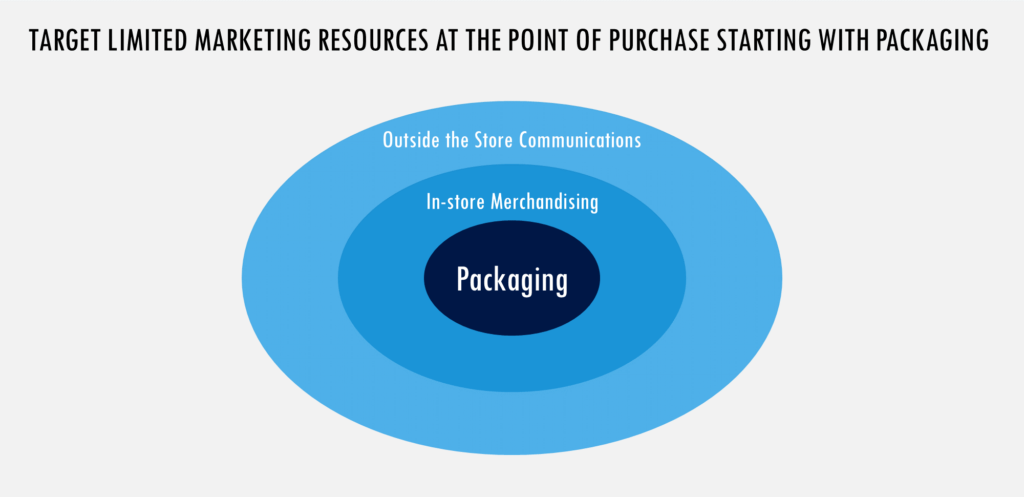
Packaging
Packaging is often under-appreciated and misunderstood. But it is the most important and efficient communication medium in your integrated communications arsenal. It is the decisive point where purchase intent and purchase behavior come together…or not. You win or lose the sale at that moment. Isn’t that where you should absolutely be the most effective? Before you spend any money anywhere else, get your packaging right.
Packaging differentiation
I took the following picture of the hair-care aisle in a grocery store in Romania in 2009. All the big brands are there managed by some of the highest-paid brand managers in the business. If you look at the TV advertising for many of these brands, I’m sure you would see some highly differentiated brand communication. But 12 years later in Istanbul, the hair-care aisle is still drowning in a sea of sameness. Nothing has changed other than a shift from predominantly using a light background in 2009 to a darker background in 2021. The marketers of these brands seem to have developed their packages sitting behind a desk or in an office conference room instead of within the cluttered environment where the customer makes a brand purchase decision…or not.
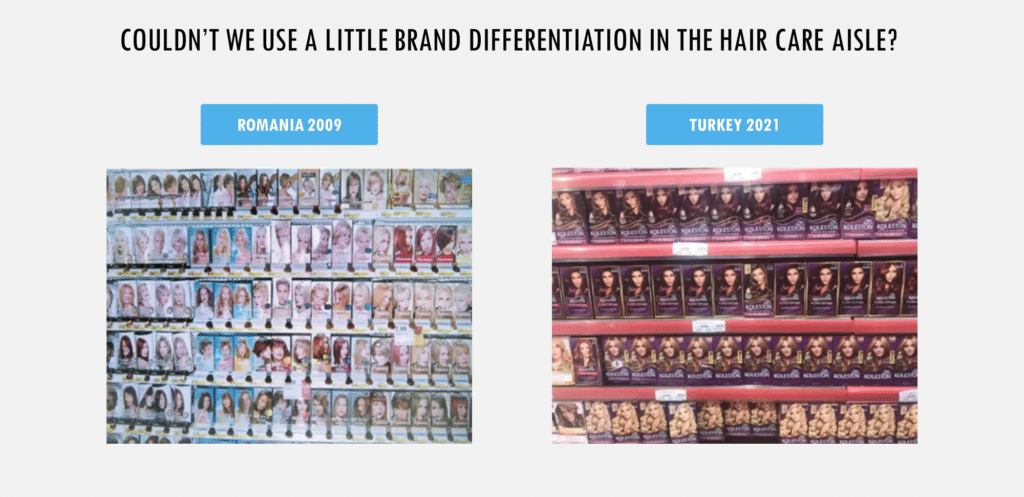
Heinz is the global leader in ketchup. But they are in love with their 150-year-old ketchup bottle and label design. They’re missing the opportunity to tell customers why it is still relevant in their lives on an everyday basis while their local competitors in Turkey and elsewhere are chipping away at Heinz’s dominance with usage experiences on their package.
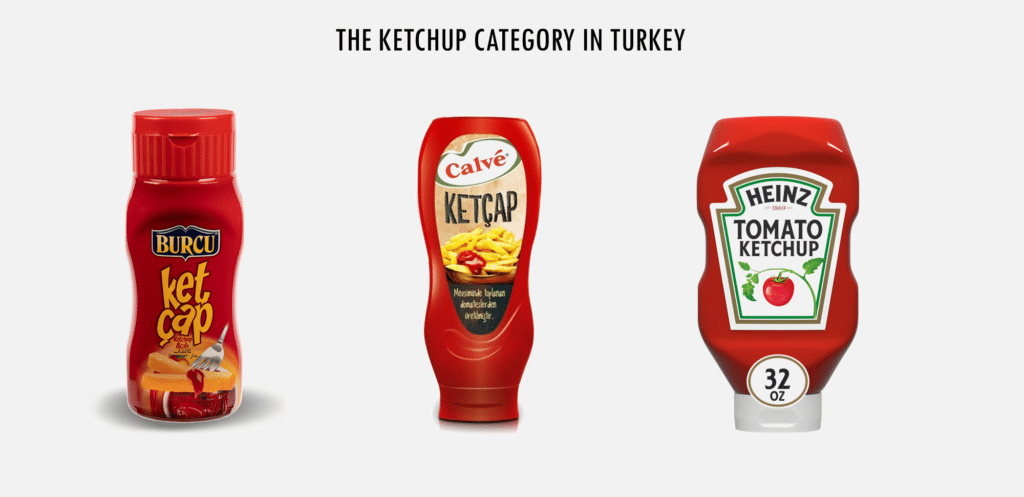
In the highly competitive chocolate bar category, Milka continues their 20-year obsession with selling product features like hazelnuts, strawberry cream, and other flavor varieties while Kinder goes right to the emotional heart of why many parents buy chocolate for their kids – to relieve their guilt about spending too much time at the office.
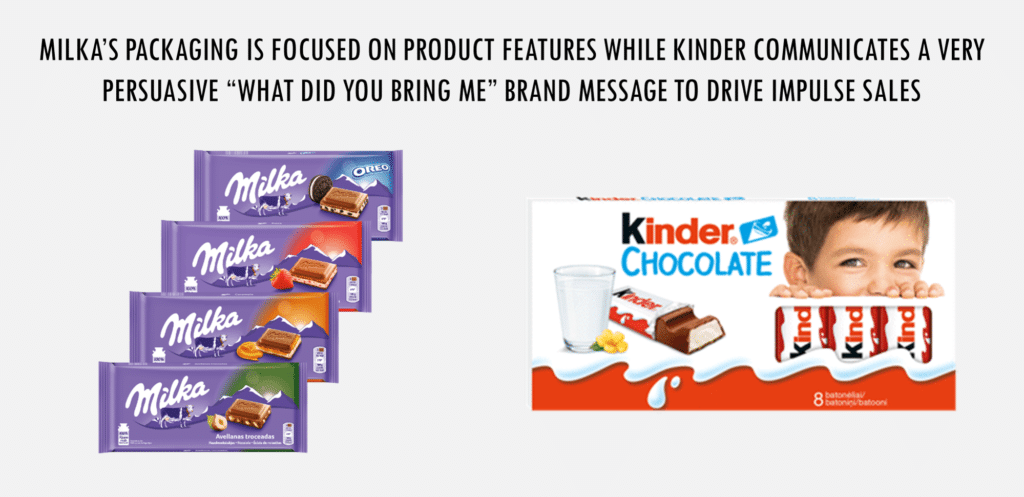
Even Barilla, the Italian pasta brand has modified their packaging front and back to be more experiential. I can only imagine the internal discussions that must have happened for them to minimize the window of their prized pasta to add the usage occasion graphic. Change can be hard.

Packaging: everything communicates!
Packaging isn’t just an important consumer goods communication tool. See how Frontier Airlines, from Colorado, uses graphics on their planes to convey a brand experience of nature and adventure. Other airlines, such as Turkish Airlines and Lufthansa continue a 100-year focus on flying their logos on the plane like a flag rather than an important brand communication tool – the packaging!
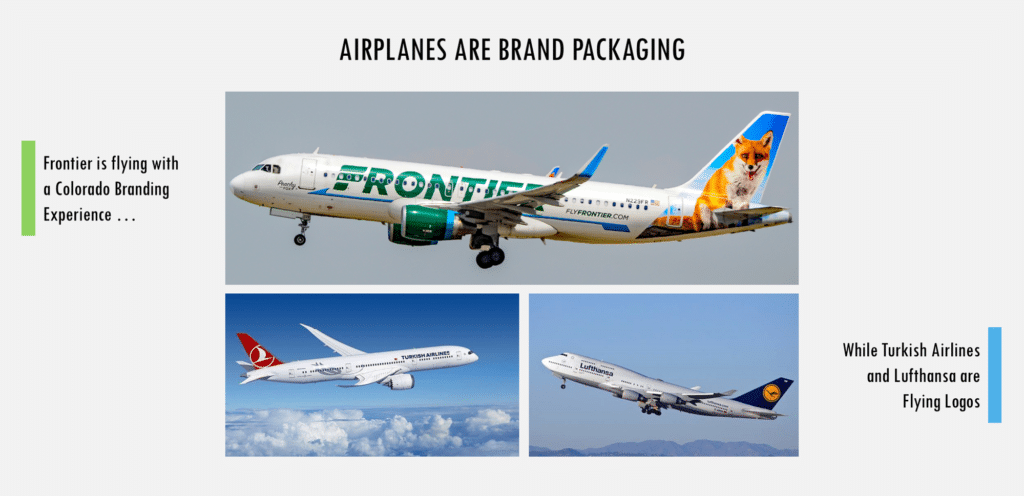
Slovenia was the first former Eastern Bloc country to rebrand its national police. As they started a comprehensive crackdown on police corruption, they overhauled the uniforms – the packaging. If they wanted to be a modern and professional police force, they needed to look like it. Everything communicates!
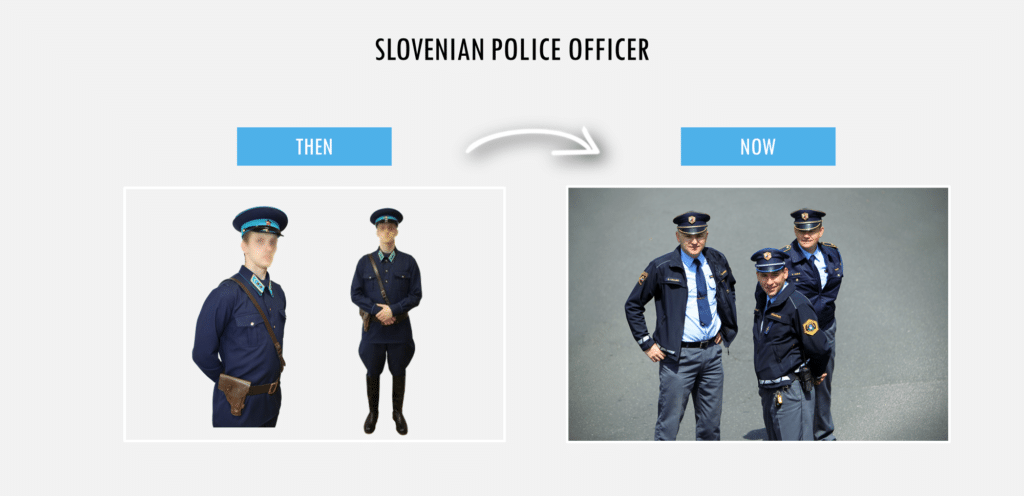
Not coincidentally, forward-thinking Slovenia was the first of the former communist countries to enter the EU.
Don’t get lost in contradictory and unrelated features and benefits when you develop your packaging. Stay focused on communicating a crucial customer usage experience to ensure brand preference can be converted into an actual purchase when it matters the most – in-store where money changes hands.
Occasion-based communications
Different customers shop for the same product in different outlets, at different times of the day, for different reasons. Customers themselves change throughout the day, week, month, and season. Communicate with them using the right brand message addressing their needs at that moment. Have the right package as well as the right brand message to match the occasion they’re shopping for.
Engage in the selling environment. Incorporate your brand message into the store environment for maximum effect rather than awkwardly trying to compete for attention. Customers are there for a reason. Fit in rather than resist and risk distraction resulting in customer and retailer alienation. If you choose to execute an in-outlet event, make sure that the activity is both occasion and brand-centric.
The advertising agency, Publicis, has done a good job over many years involving the customer at the point of purchase. Their creative teams approach the entire buying process as an integrated customer journey because it is.
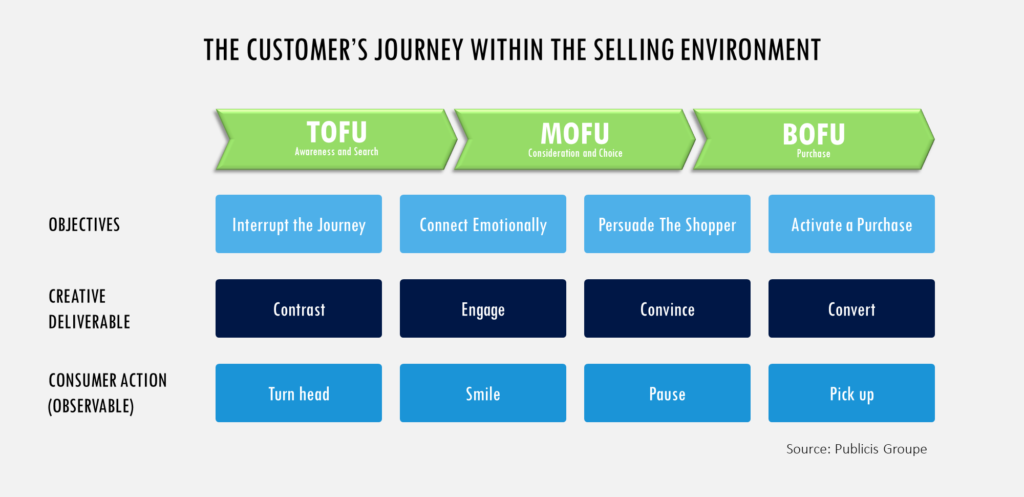
Publicis helps their clients think about the specific role of in-store communications relative to the customer’s state of mind as they move through the store. They place clear creative deliverables and objectives on the customer’s in-store path to purchase as they call it. If I was managing one of those brands in the hair-care aisle, the next call I’d make would be to hire Publicis to meaningfully differentiate my packaging. They get it. Below is an example of how Publicis pitched Nestlé on how to better engage consumers in the ice-cream section of grocery stores in Thailand. Which one do you think is going to drive brand preference while it sells more ice creams at the point of purchase?
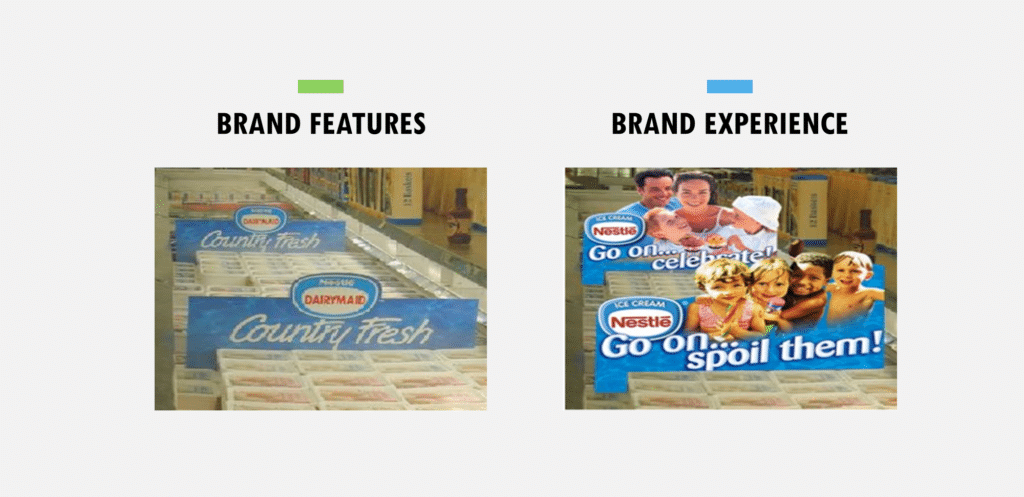
Experiential marketing
Work with your retail partners to develop innovative solutions to sell more of your products to shared customers, rather than pushing programs to get them to simply bring in more inventory, such as what the P&G Pampers team did with innovative diaper stations at Tesco’s in Poland following Lafley’s directive to engage at the moment of truth.
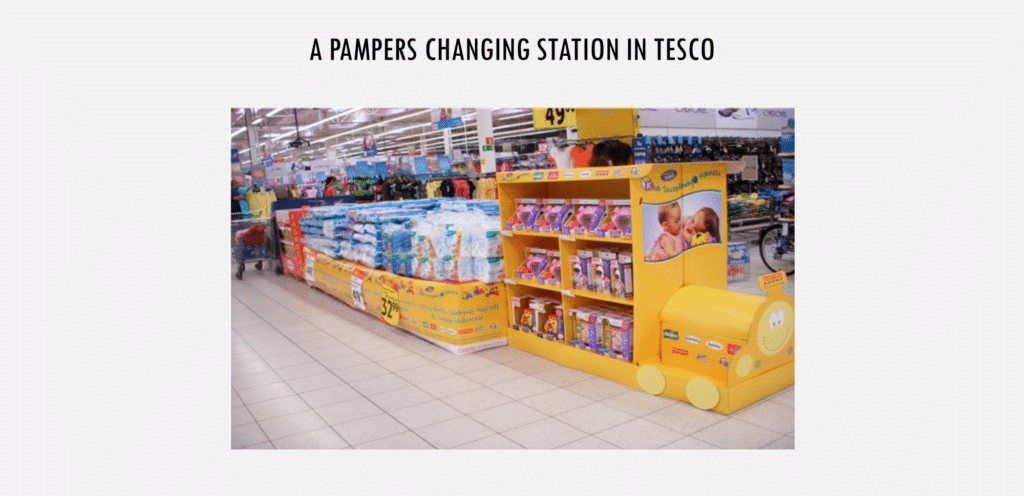
It’s important to note that after Lafley retired from his role as CEO at P&G in 2010, he is the only CEO the P&G Board ever asked to come back for two more years to make sure all of what he called the consumer is boss initiatives such as the moment of truth and many others became even more firmly embedded in transforming P&G’s marketing culture. And along the way, he more than doubled the venerable company’s market capitalization to be one of the most valuable companies in the world.
Bosch in the appliance sector took the same experiential in-store approach with MediaMarkt in Italy to communicate brand differentiation in-store.
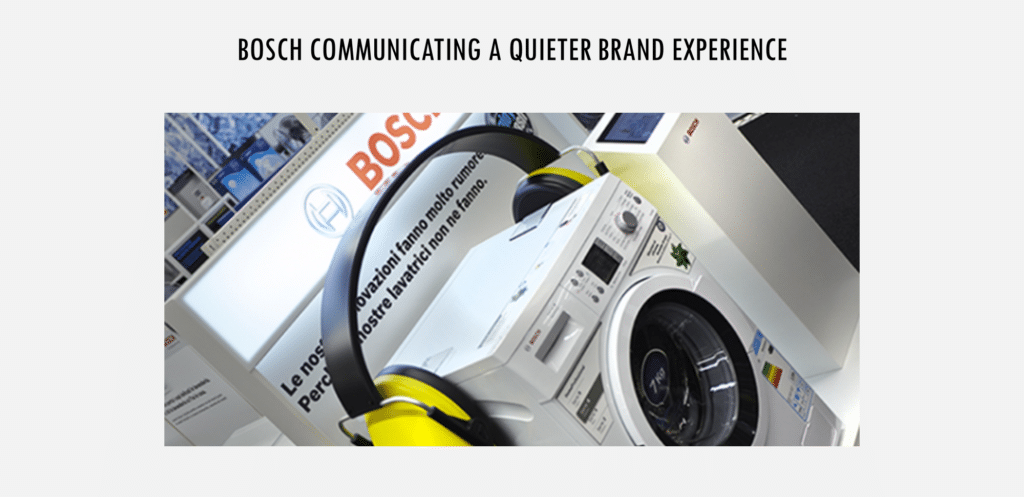
Creating a partnership with retailers
It really is a brand and retailer partnership. Just as you can and should rely on the retailer to provide overall shopping behavioral data in their stores, they are looking to you to learn how they can sell more from your product category. Lead that effort and be the ‘category captain’. Use the information from your consumer segmentation research on category and brand influencers to show retailers how they can sell more to customer segments that are competitively significant to them. In this way, the retailer can achieve key objectives like attracting new customers, building visit frequency, and increasing transaction size.
Price is informational – it should not be the primary reason to buy! Keep price communication in the right context after you have communicated BRAND value – more for more and worth it. Stay the course and keep your brand experience in the front of your mind as you execute your in-store communications.

